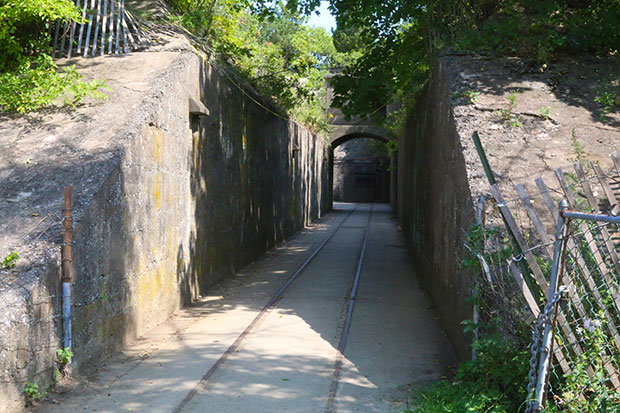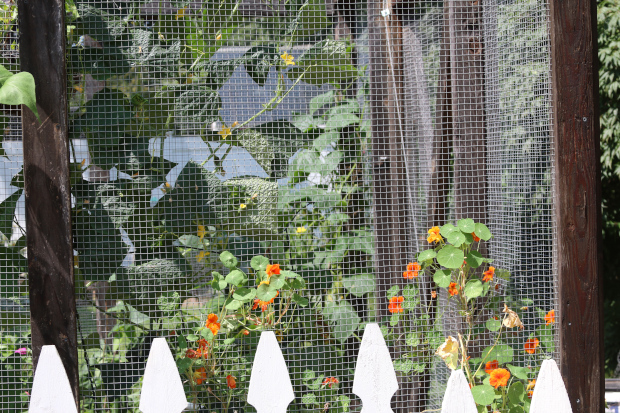
Because of the deer and other critters in our neighborhood, I grow my cucumbers in a cage. Pictured are the cucumber vines and climbing nasturtium. Nasturtium have yellow and orange edible flowers (and edible round leaves) that you can use to dress up your salads.
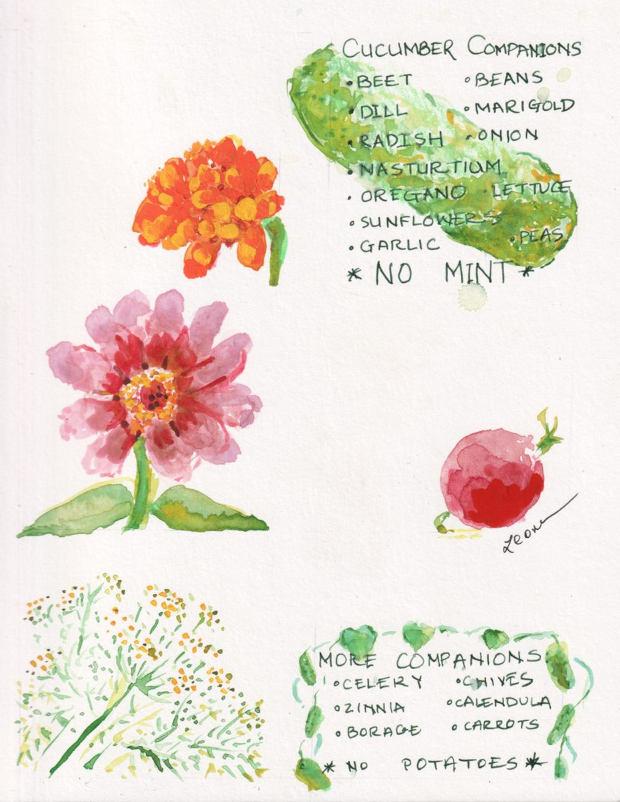
Growing cucumbers is not as simple as stick a few seeds in the ground and watch them grow. One needs provide good soil with proper nutrients, enough water, and a way for the plant to climb up. In addition it is a good idea to plant cucumber companions in the general vicinity of your cucumber plants. In order to learn what to plant and what not to plant, I did this art illustration. I already had nasturtium and radish in my cage. This year I sprinkled several zinnia seeds and moved the marigolds into the cage. I also removed some mint that was growing directly outside the cage. Dill is one of my favorite herbs, so I made a special effort to keep the dill going strong by adding compost around the base of each dill plant every few weeks.
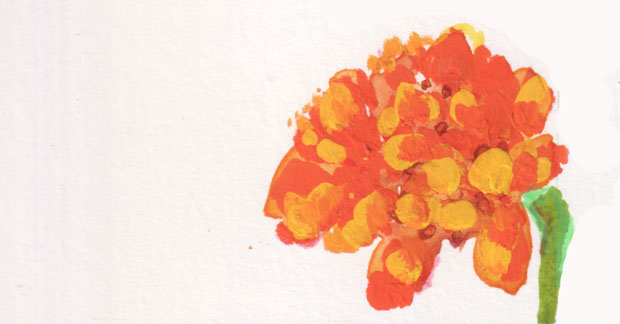
Marigolds are easy to grow. They are a good beginner plant. For some unknown reason, few of the marigold seeds that I saved from last year germinated. I was able to buy several marigold seedlings for a low price early in the spring at our local farmers market. Those are flourishing.
Painting flowers is harder than it looks. I first painted the marigold with watercolor. I didn’t think the orange was strong enough. I switched to gouache and applied thick, small strokes. I am happy with the result.
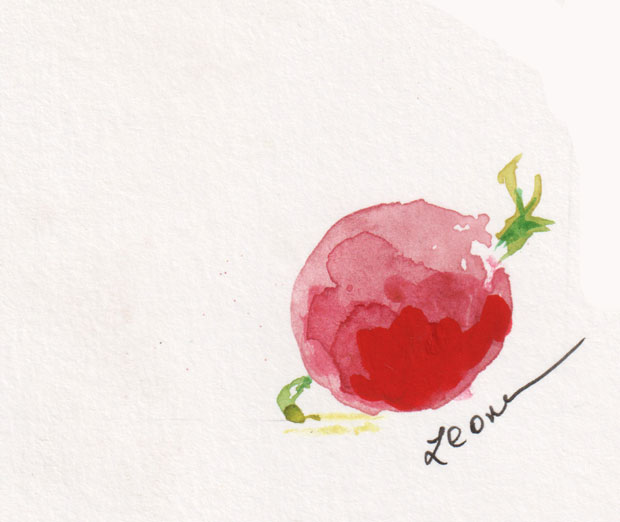
Radishes are easy to grow. You stick the seeds in the ground, and a week later you have round little leaves poking out of the ground. Make sure to plant in loose, rich soil, and in a month you will be pulling radishes. Sometimes I eat radishes raw. Sometimes I ferment them in a little jar with sea salt and filtered water. You can also steam the radishes if you like them sweet.
Radishes are easy to paint. Make sure you have a nice, thick red paint and a good brush. Paint a few layers, leaving one side a bit on the white side to show form.
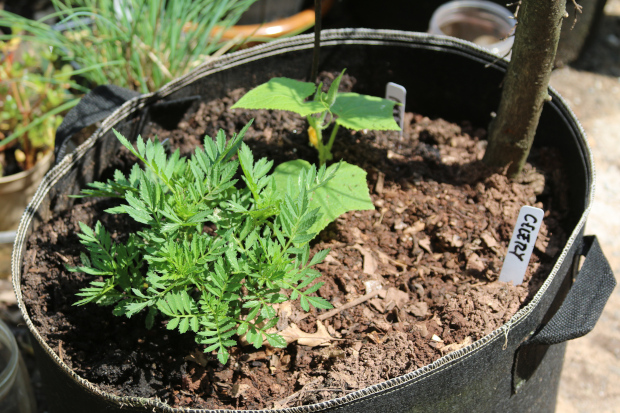
A friend gave me these large black cloth bags for planting. I am experimenting with a little container garden. Pictured are marigold and cucumber seedlings. I put in some celery seeds. Hopefully, sometime this fall we will get some celery.
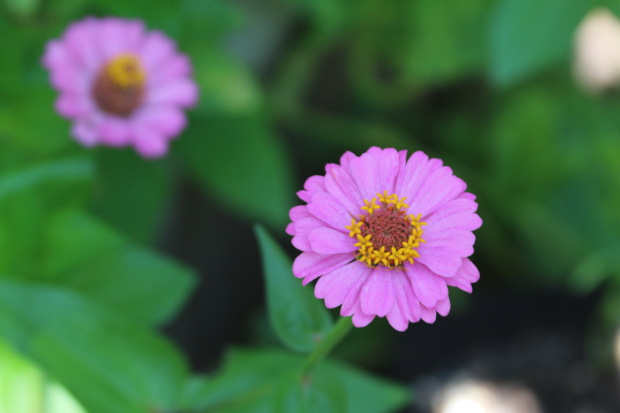
Zinnia come in a variety of colors. If you have full sun, a plot of land with decent, loose soil, and determination, you can sprinkle zinnia seeds in May or early June and receive the reward of flowers in the summer.
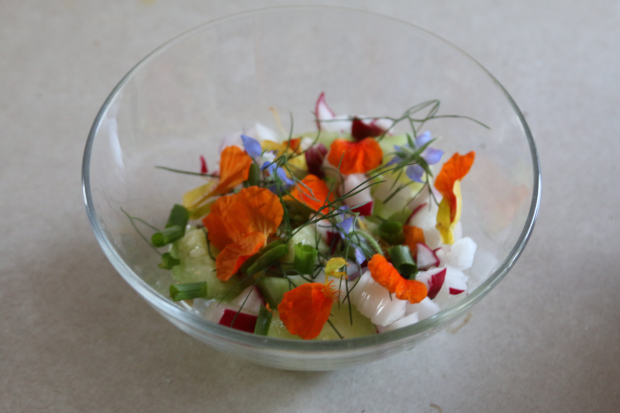
Have you ever eaten a nasturtium flower? What would you do with a radish? Have you eaten a cucumber that is not from a supermarket?
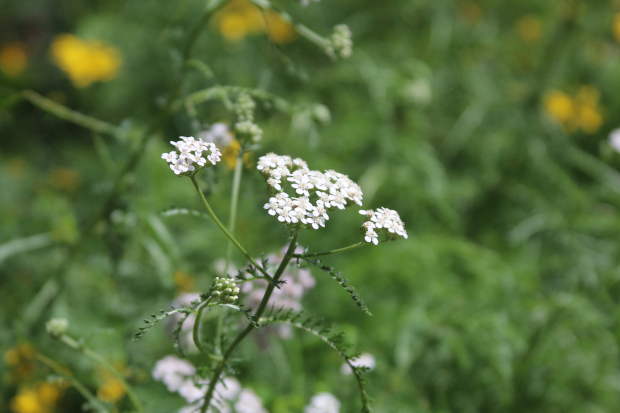
Someone asked me: why are you posting yarrow? Is it your favorite flower? No, I responded. My favorite flower, at least for this year, is cosmos.
So why am I posting about yarrow? I realized I am posting in order to learn yarrow’s health benefits. Here are a few:
- Improve digestion
- Accelerate wound healing
- Alleviate colds or the flu with yarrow tea
- Reduce inflammation
You can learn more about the healing properties of white yarrow (yarrow millefolium) elsewhere.
Yarrow comes in a variety of colors. In my backyard I have big yellow yarrow flowers that are currently in bloom in July. In the front of my house I have white yarrow. Yarrows are perennials. The Latin name is Achillea.
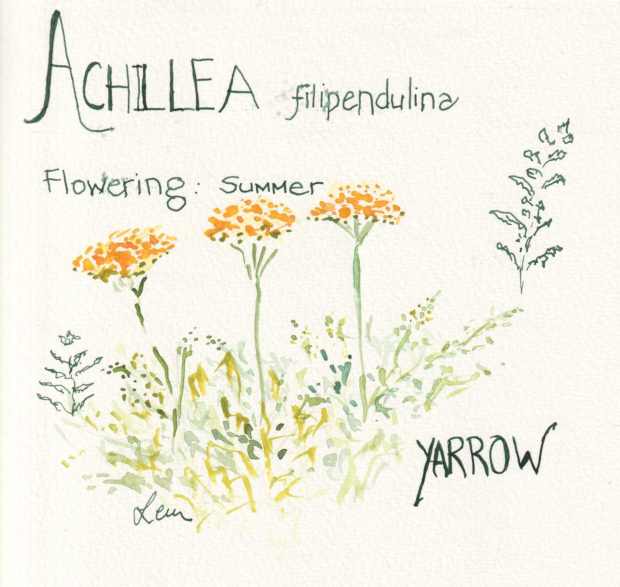
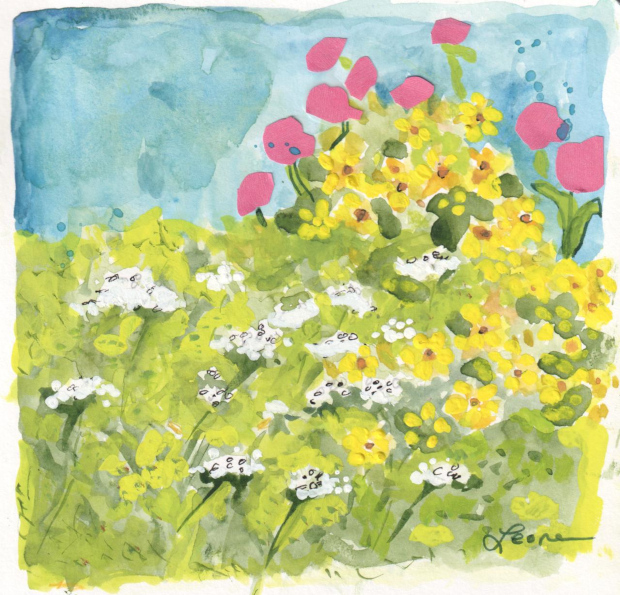
Pictured is achillea millefolium (white yarrow), coreopsis, and lamb’s ear flowers. I painted the illustration with watercolor, gouache, and collage for the bright pink lamb’s ear flowers.
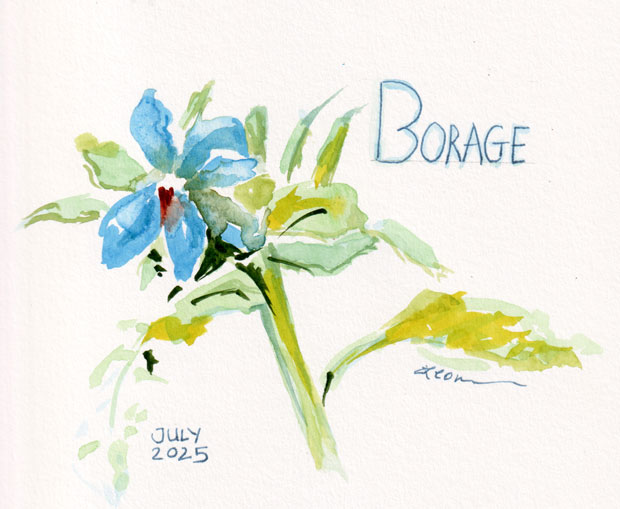
This was going to be a post about rudbeckia or black-eyed susan. However, a deer ate my beautiful yellow flower that miraculously blossomed in front of my house. So I looked for inspiration elsewhere.
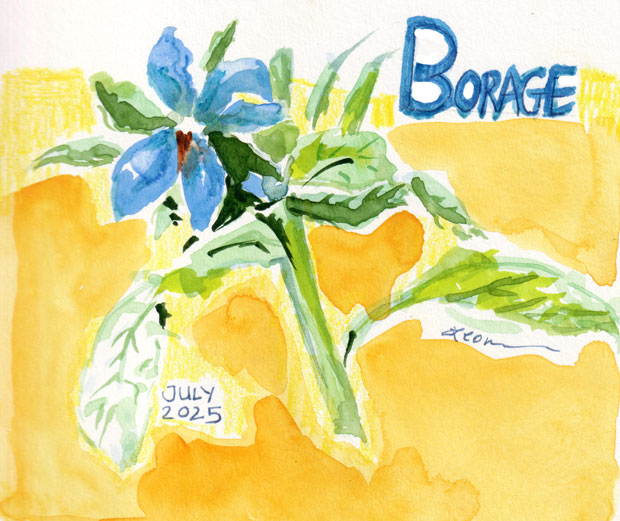
Borage is growing in my plant cage. I had the cage built because the deer ate most of my edible plants. This year I am concentrating on growing cucumbers. A good companion to cucumber plants is borage. I originally put three borage seedlings that I bought at the Highland Park Farmers Market in my backyard. However, despite my deer fence in the backyard, something nibbled at the borage. So off it went into the cage.
Borage is grown as an annual in New Jersey. It is native to the Mediterranean. Some special notes about borage: you can eat the flowers and the leaves. I have seen the flowers described as cornflower blue or as smoky blue. To me the blue is slightly on the purple side.
I sketched several pages about borage in my sketchbook.
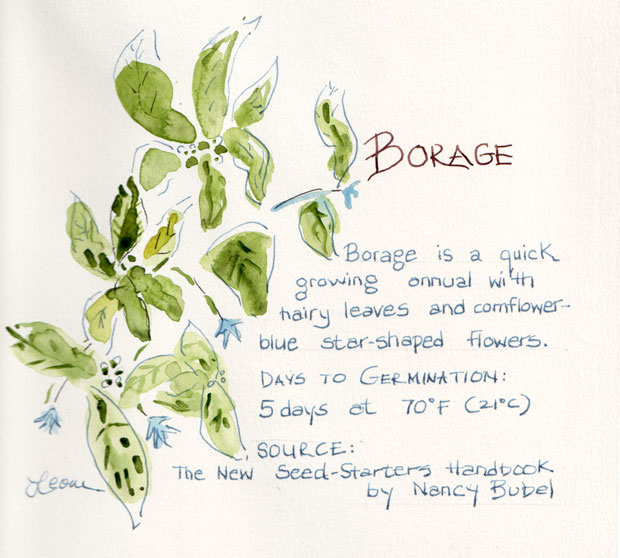
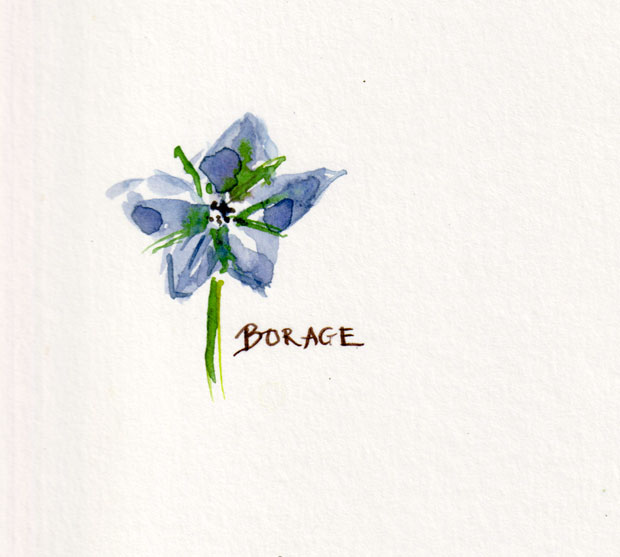
Borage is a quick growing annual with hairy leaves and cornflower-blue star-shaped flowers.
Days to Germination: 5 days at 70° F
Source: The New Seed-Starters Handbook by Nancy Bubel
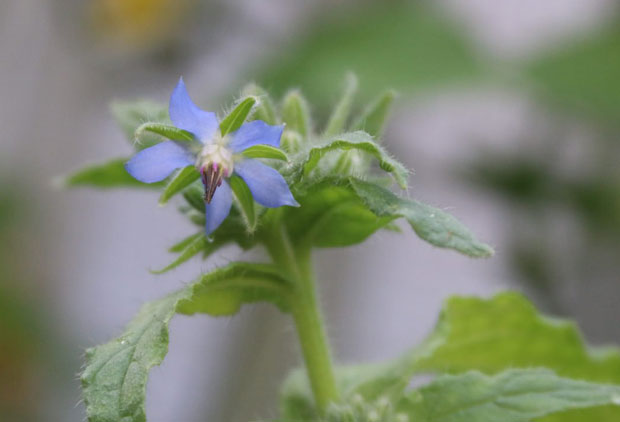
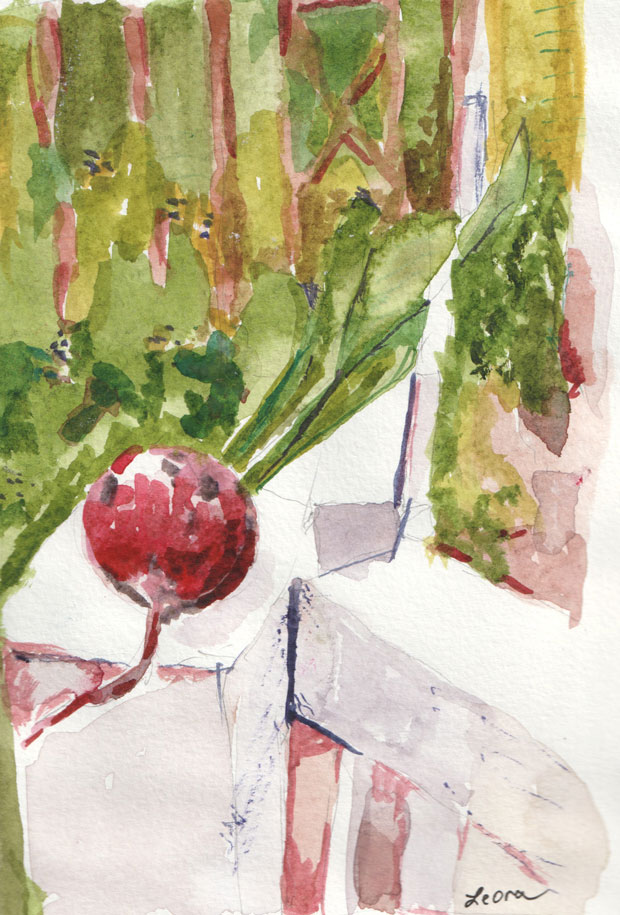
I was fiddling in my garden, and I saw the top of something purplish red. Behold! It was my first radish, in my new garden structure built by my friend Yosef Schmidt. I was so excited that I took a photo. It felt like the first “fruit” of my new garden: the other produce so far has been greens.
It turns out that there is a challenge called #studyfromlifechallenge on Instagram. You are supposed to paint from real life based on a weekly theme. So this week the theme was pink. When a painter looks at that radish, it is not just one shade of color. So I started my watercolor with opera pink. I later added some alizarin crimson and a tiny bit of cobalt blue.
Below is a photo of the garden structure when it was first built. It is 7 feet tall, and I commissioned Yosef to build it because the deer kept eating my plants. And we used to have a groundhog that lived on our garage that would eat all sorts of goodies in my garden. It has a door in the back, and a row for a human to walk into the structure and examine the three garden beds that are in a U shape.
So far, I have grown micro greens, french chervil, parsley, lettuce, and now radishes! Pea plants are growing, but no peas yet. Hopefully, basil, tomato, cucumber, and beans in the summer.
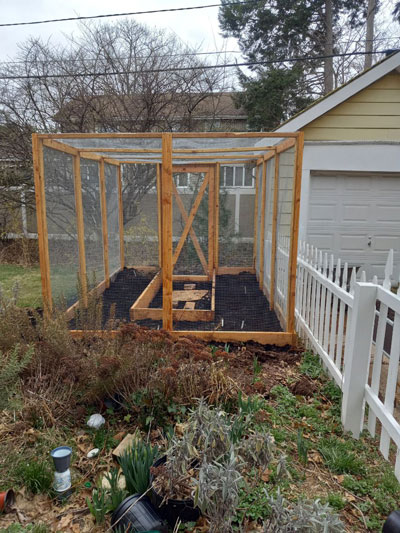

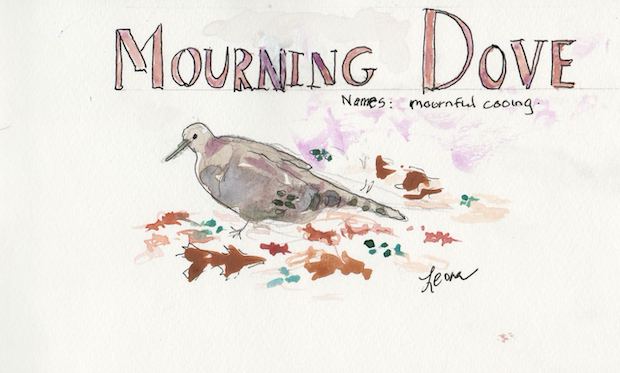
This week a mourning dove was wandering about my front yard. Instead of grabbing a camera and photographing the bird, I took my watercolor sketchpad (Travelogue Artist Watercolor Journal) and used a pencil and pen to draw the bird. I took it back in the house, added a little watercolor to the bird, went back out again to examine the mourning dove carefully. Yes, it did have those spots toward the tail. Yes, they were a shade of darkish gray. Yes, the beak was also darkish gray. Later I looked in my Birds of New Jersey Field Guide by Stan Tekiela and learned more:
Name comes from its mournful cooing. A ground feeder, bobbing its head as it walks. One of the few birds to drink without lifting head.
The one in my yard seemed to have a longer beak than the one pictured in the book.Also, I did not see the bright color in the head that Stan Tekiela showed in his photo. Adding a bit of lavender did seem to match the bird that I saw. However, as an artist one could also say using lavender was artistic license for either shadow or for gradations of hue or saturations.
Do you see birds in your yard? Do see distinguishing marks on the birds, whether color, spots or types of feathers?


One of the cool things about visiting Israel at the end of January was in all different sorts of places I found flowers! I am not used to flowers in January; I grew in the Boston area where what one found on the ground was usually snow. I photographed a variety of Israeli flowers in January. The yellow daisy above was somewhere near Tel Aviv.

Here is a similar yellow flower – also north of Tel Aviv, in a different spot. We had visited my niece who is teaching English in an international high school. I am wondering if keen-eyed nature bloggers can suggest difference between these two daisy-like flowers.

These lovely dark pink flowers were growing in a garden in Jerusalem right behind Yemin Moshe.

This shot of the dark pink flowers focuses on the Old City of Jerusalem behind the garden. It was a lovely view.

This pink flower with thick leaves was in a location north of Tel Aviv. In Israel one can often find flowers and plants with thick leaves; the thick leaves store water, and almost no water falls in the summer, so the plants have to store it up to stay alive.

This is some kind of thick leaf vegetation by the Mediterranean sea north of Tel Aviv.

I photographed this thistle in the Hula Valley. Contrast this green look of the thistle in a winter with abundant rain with the thistle I photographed back in 2008 in a drought.

A tiny wildflower peaked out at me when I visited the backyard of a friend who lives in Har Adar, Israel, a beautiful village on top of a tall hill, the tallest hill in the west Jerusalem hills. Maybe it’s some kind of geranium? (See cranesbill that grows in front of my house, as a contrast). There was also abundant rosemary growing in the area. When I grow rosemary in New Jersey, it almost always dies in the winter. In the Jerusalem area, even the winters are cold, they are not as cold as in New Jersey, so the rosemary spreads and makes itself known. How nice to have rosemary naturally in your backyard!

Enjoy some yellow wildflowers I found by Tel Azeka (a few minutes by car west of Beit Shemesh).
It’s been a while since I last posted. In the Nature Notes blogging world, something awful happened last month. I was hoping to get a comment on my last post from one of my favorite bloggers, EG Wow (real name: Tina Forrester). I learned to my horror that Tina and her husband had died in a terrible car accident. If you have never visited her blog, oh, sigh, you are in for a treat. But you will never really learn how warm and friendly her comments were when she commented on other blogs. May her family and friends know no more sorrow.
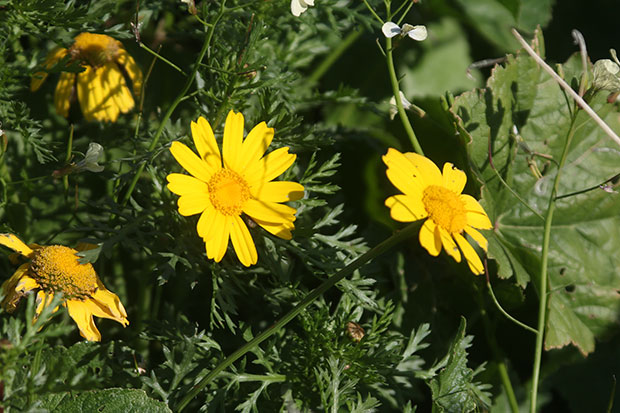

Among the birds I saw at the Hula Valley in Israel: gallinule (moorhen), lapwing, egret, crane, pelican. My daughter saw a small blue bird fly by quickly twice – this may have been a kingfisher.
A bit of history about this magical (to me, at least) place in northern Israel:
Back in the 1950’s the malaria-ridden swamps of the Hula Valley were drained. However, this caused ecological damage. From the leaflet of the Hula Agamon Lake: “Over the years the peat earth that is typical of the Hula(organic earth the the remains of plants and animals) dried up, broke up, sunk, and even started to burn underground. The worst thing was that the phosphates and nitrates in the earth were washed into the Kinneret and polluted its waters.” In the 1990’s earth was restored; the project included digging canals that allowed the control of water in the area.
One of the major benefits of the 1990’s work was this ornithological spot, unique in the world. Over this area twice a year no less than 500 million birds migrate.
Learn more here: http://www.agamon-hula.co.il/?lang=en_US

This bird is a spur-winged lapwing or spur-winged plover.

Here is a gallinule – note that orange beak.

Here my daughter is standing by a white nesting box. We didn’t see any birds near the box, but the box reminded me of the boxes we saw at Cape May. According to the literature we were handed when we entered, these are for white owls. It seems the white owls eat voles, and voles do damage agriculturally, so eliminating the voles is a good thing.

I got some good photos of the handsome egret.


I believe this is an egret in flight.

The most abundant bird species in the area are the cranes.

Those spoonbills sure have funny beaks. (see https://twitter.com/hulakkl/status/498657479324991488)

This furry-looking guy is a muskrat.

Ah, after rain on and off, it’s nice to be rewarded with a rainbow!

Even better, here is the rainbow with birds flying by.
Notes on visiting Hula Agamon Lake: don’t do what we did and try to walk the whole thing. We should have rented the golf cart. It’s a big area! There are also bikes available to rent. It would be great to visit during a migratory period, but I feel fortunate that I got there at all.
For more nature notes, visit:



I have always wanted to see the spring flowers in bloom in Israel, and on my recent trip, I had that opportunity. Too bad my daughter thought the day too cold for an outdoor trip, but to me it felt like April in Boston.

There is a song in Hebrew for these beautiful red flowers that show up all over the landscape in February in Israel: kalaniyot. The English name for these flowers is anemones.

The ones I saw were not yet open. I asked my son who is spending the year in Gush Etzion if he saw any red flowers, and he said, oh yeah, he did see a lot of red flowers. Probably wouldn’t have noticed if I hadn’t said anything.

This is rakefet – cyclamen in English. Turns out there is a song for rakefet as well!

This is an almond blossom. That one, too, comes with a song: Hashkedia porahat. In about one month parts of Israel will be full with these blossoms.

I saw this chicory flower as well. I think the Hebrew is olesh.

There is history in the park as well. Supposedly, somewhere in the plains David battled the Philistines.

I’m not sure what city that is in the background, but when you reach the top of Tel Azeka on a clear day, you can see far in many directions. I think the general area is called Emek HaEla – Valley of Ela.
For more Nature Notes:

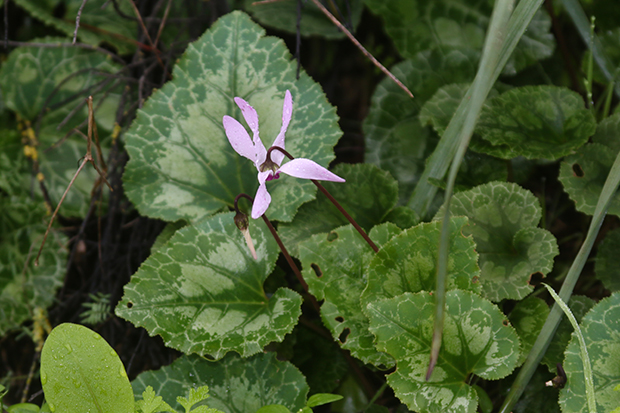

We were visiting my in-laws who live near (10 minutes by car) the Jersey Shore. I woke up early as usual (see moon above), and I went on a little expedition to the lake I mean swamp I mean wet, watery, swampy area that sometimes has birds near a golf course.

I had once visited this area with my mother-in-law and my daughter. At the time I had an old phone, one with a poor camera. Of course, we saw a heron (see heron photo here). So this time I was prepared with my large fancy Canon, but no heron at all. Not even a bird. I could hear them, but they didn’t land. The day before I came with my daughter; we did see a colorful butterfly flutter around the plants in the distance. But that was Shabbat, and I had no camera at all. Often in life you have to just take what you can get – I noticed in my 2011 post I was complaining that my kale did not germinate. Well, this year it did! We shall see if any seedlings grow nicely into plants.

So looking around, what else was there to see? I did see this log – although it wasn’t exactly what I had in mind.

I looked in the water to one side, and these lily pads floated on top of the lake swamp.

I did see these little yellow wildflowers aligning the edge of the watery swamp.

Some lovely orange wildflowers were off to one side, further from the water.


Off in the distance I could see the sprinklers starting for the golf course.
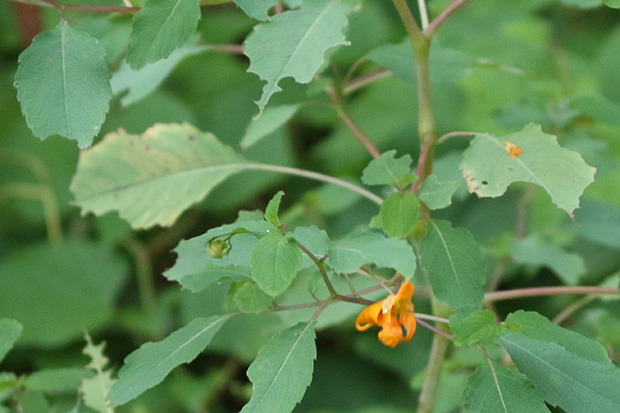

One of my favorite places in New Jersey is Sandy Hook. Sandy Hook is a little peninsula (a hook?) at the top of the Jersey Shore. On one side there are ocean beaches with places for parking and restrooms. On the other side are little cove beaches. At the far end are a lighthouse and historical buildings.
We first went to the ocean side – it was crowded, and the waves were strong. We then decided to drive closer to the lighthouse, parked the car, and discovered the little cove beach at the top of this post. We swam, had lunch and discovered various beach items.

I wanted to climb to the top of the lighthouse, but my daughter did not. This is a lesson in patience – I make lists in my head of stuff to do when I have the opportunity. We did watch a movie in the little house next to the lighthouse all about piping plovers, and how they on the threat of extinction list. I suppose I would have to wake up early in the morning and go with another bird lover if I wanted to watch the plovers on the beach myself.

A good number of the buildings at Sandy Hook were once upon a time used by the U.S. military. Above is a mortar battery at Sandy Hook, built about 1898. You can learn more about Sandy Hook and how it was used to defend New York City on this National Park Service article.

I saw these horseshoe crabs (deceased!) on the beach, so I took a photo.
Some facts from the Florida Fish and Wildlife Conservation website:
Four species of horseshoe crabs exist today. Only one species, Limulus polyphemus, is found in North America along the Atlantic and Gulf coasts from Maine to Mexico… Horseshoe crabs are not true crabs at all. Horseshoe crabs are more closely related to arachnids (a group that includes spiders and scorpions) than to crustaceans (a group that includes true crabs, lobsters, and shrimp). Horseshoe crabs are often called “living fossils” because fossils of their ancestors date back almost 450 million years–that’s 200 million years before dinosaurs existed.
A scene I found beautiful:

I did post about Sandy Hook way back in 2009.
